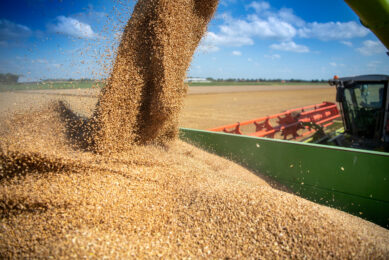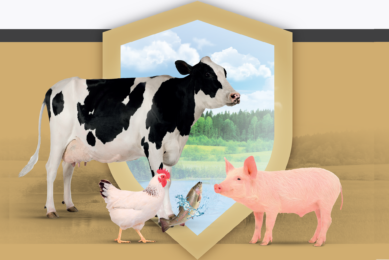Back to the basics: An introduction to mycotoxins
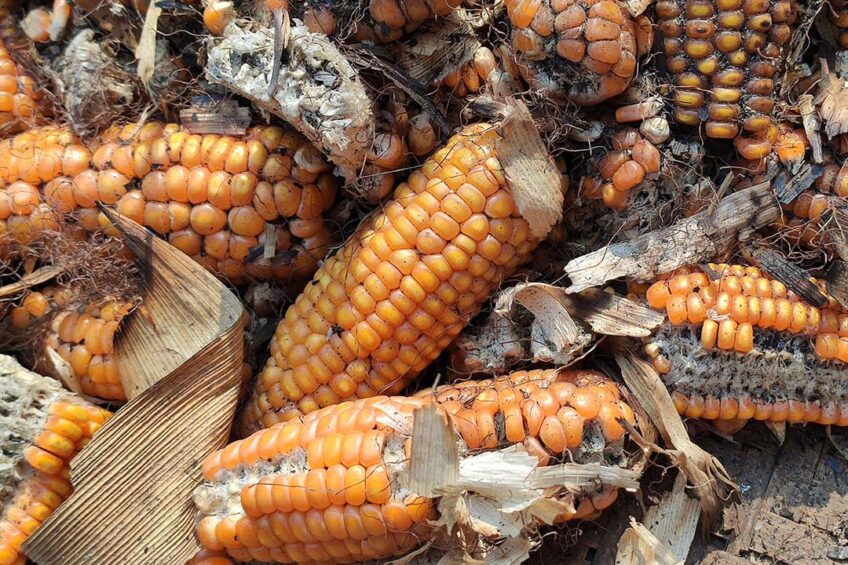
Mycotoxins form an important factor for the health of pigs, poultry and dairy cows. In recent years, the amount of information about mycotoxins has grown exponentially – leading to many technical papers. Mid-2023, the comprehensive ”Mycopedia” was published. As the name says, this voluminous publication contains everything there is to know about mycotoxins. Its first chapter discusses the bare basics. This article is an edited summary.
All mycotoxins are produced by fungi, but not all fungi produce mycotoxins. And when conditions are right for the mycotoxins to proliferate, they have a negative effect on feed quality, animal health and performance. But why, where and when are these toxins produced? The origin of mycotoxins is explained here.
Contaminants
To produce safe and nutritious animal feed, the risk of contamination should be limited to a minimum and preferably eliminated. Animal feed ingredients or complete feed can be contaminated with a range of contaminants, heavy metals, residues or pathogens throughout the production, harvest, processing and storage phases and these cause disease and production losses. Mycotoxins are part of the group of natural contaminants that can cause a serious risk to animal feed quality.
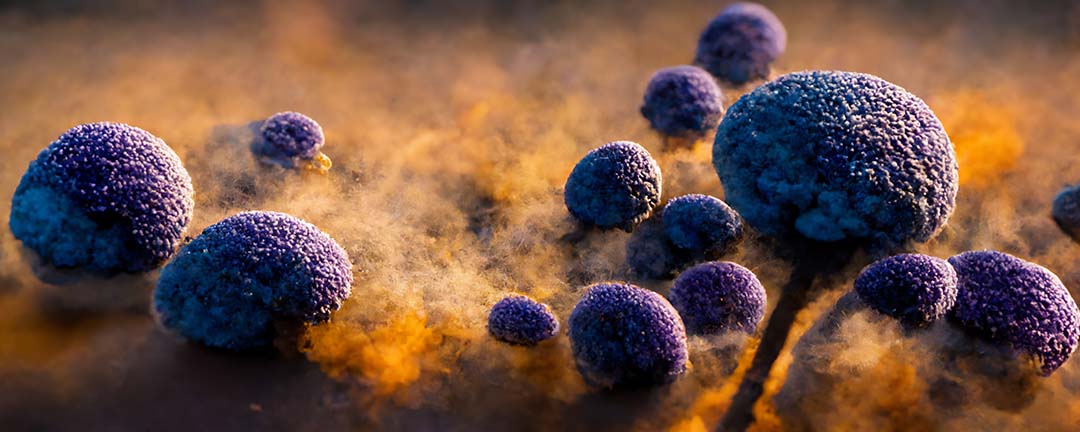
Discovery of mycotoxins
Mycotoxins are toxic compounds that are naturally produced by certain types of moulds (fungi). They were recorded in history as far back as 5,000 years ago in China. In addition to ergot (fungal disease of cereal grasses) and mushroom poisoning cases recorded during the Middle Ages, reports as early as 1861 indicate that a suspected mycotoxin affected humans in Russia, and in 1891 there was a report of mouldy rice in Japan deemed toxic to humans.
Up until the 1950s, the infection of rye by ergots posed a significant public health issue in Europe and continues to do so today in less developed parts of the globe, particularly in tropical regions.
Major health incidence in poultry
Information on what mycotoxins can do in animals only came later, spurred by a major health incidence in poultry. In the 1960s, more than 100,000 young turkeys on poultry farms in England died in the course of a few months from an apparently new disease that was termed “Turkey X disease”. A careful survey of the early outbreaks showed that they were all associated with feeds, namely Brazilian peanut meal that was contaminated with toxins, thought to come from fungal origin. In fact, the toxin-producing fungus was identified as Aspergillus flavus (1961) and the toxin was given the name “aflatoxin’ by virtue of its origin.
This discovery sensitised scientists to the possibility that other occult mould metabolites might be deadly, which led to a growing awareness and research of the potential hazards of these substances for human and animal health. The presence of mycotoxins in food and feed may cause adverse health effects in humans and animals, ranging from gastro-intestinal and kidney disorders to immune deficiency and mortality. Animals get exposed to mycotoxins by eating contaminated feed ingredients or complete feed.
The different metabolites of fungi
Mycotoxins, which are natural contaminants (toxins), represent a very diverse group of molecules, often with relatively low molecular weight. They are produced by a variety of microfungi, eukaryotic organisms, such as moulds, mildews and rusts, which have microscopic spore-producing structures. Fungi can be mono- or multiple-cell organisms, mostly aerobic, which survive within a wide range of moisture, temperature and pH levels. They inhabit nature freely and feed on the absorption of organic matter. Instead of producing their own food, fungi absorb nutrients from either living or dead host material. These microfungi live in complex nutrient-deficient environments, be it in soil, plant or animal hosts.
Secondary metabolites
Fungi are among the micro-organisms that metabolise many organic substances such as sugars, lipids, proteins, etc. These metabolic processes produced a range of secondary metabolites. These were initially thought to be waste products only, but fungal secondary metabolites are now considered as important players in ecological settings. Some metabolites provide the fungi protection from physical damage. For example, spore melanin (pigments) has been demonstrated to protect them from damaging agents such as UV, ionising and gamma irradiation. Some fungal secondary metabolites provide protection against other microbes, helping the producing fungus to secure its environmental niche.
As an example, gliotoxin, an antimicrobial substance obtained from several fungi, is also known to be a virulence factor of the human pathogen Aspergillus fumigotus. This notion of ecological function is applicable to all fungal secondary metabolites. Although secondary metabolites are “not required” for the growth and development of fungi, they function as fitness factors. The production of particular secondary metabolites is usually restricted to a small number of species and may be species, or even strain-specific.
Why do fungi produce mycotoxins?
Mycotoxins are part of the secondary metabolites that fungi produce and these contribute to the pathogenicity, aggressiveness and/or virulence of fungi. In other words, mycotoxins play a significant role in the defensive strategies of mycotoxigenic fungi against the resident microbes. Interactions between microbes in such environments may involve competition or compromise where mycotoxins may serve as essential chemical language mediating communication. The host environments are usually unfriendly, thus requiring special adaptations in order for the fungi to thrive in such conditions. Several studies support the view that mycotoxins may act as signalling molecules that modulate host responses and promote successful colonisation.
Fungal secondary metabolites, including those produced by Fusarium species, such as equisetin, fusaric acid and beauvericin, are involved in disrupting quorum signalling in bacteria. In addition, two other mycotoxins, zearalenone and fumonisins, have been demonstrated to inhibit quorum signalling in the bacterium Chromobacterium violaceum.
Subsequent mycotoxin production
Fungi presence, however, does not automatically signify subsequent mycotoxin production, as the conditions required for mycotoxins production are definitive and independent from the conditions that promote the growth of fungi. This process is influenced by environmental conditions such as temperature, water activity and humidity. Other factors such as pH, fungal strain and substrate also play a role in the formation of mycotoxins. The interactions among the three main factors (grain type, biological factors, and environment) can control the occurrence and dominance of fungal species on grains, and the type and amounts of the mycotoxins produced (see Figure 1).
Figure 1 – The main interrelated factors affecting fungal growth and mycotoxin production.
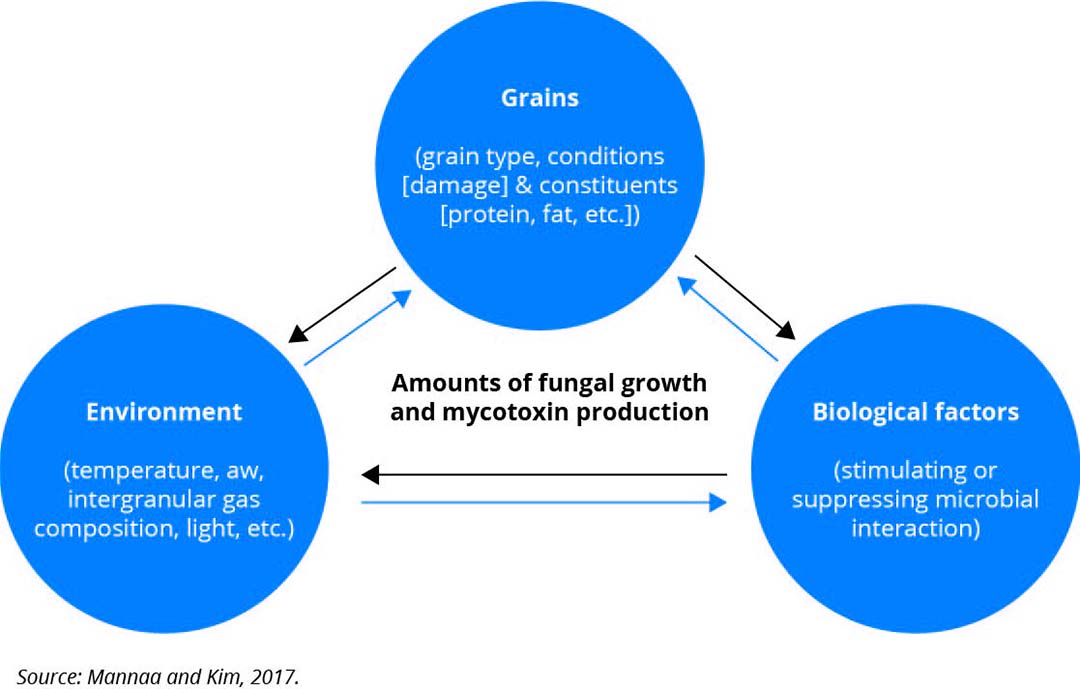
Mycotoxins of concern
Mycotoxins differ from each other structurally and in their ability to cause adverse effects in humans or animals. They may be classified in a variety of ways, for example, by the type of toxicity they cause, by the organism that produces them, or by their chemical structures.
Animals are exposed to mycotoxins through ingestion, inhalation, an/or skin contact. The ensuing diseases produced by mycotoxin exposure are called mycotoxicosis. To date, more then 400 mycotoxins have been described, and all vary in fungal origin, function, structure, toxic potency and biological effects. In addition to mycotoxin contamination of grain crops, mycotoxigenic fungi can cause ear rots and stalk rots in maize. It is important to highlight that not all stalk rots and ear rots are caused by mycotoxigenic fungi.
Most research and world-wide regulations have focused on the group of the most toxic and prevalent mycotoxins, that cause significant effects on agriculture, animals and humans. These include: aflatoxins, ochratoxin A, patulin, fumonisins, zearalenone, and the group of trichothecenes: deoxynivalenol (DON or vomitoxin), nivalenol, T-2 and HT-2.
These toxins are produced by just a few species from the common genera Aspergillus, Penicillium and Fusarium. These important phytopathogenic and food spoilage fungi are either commensals, growing in crops without obvious signs of pathogenicity, or they invade crops after harvest and produce toxins during drying and storage.
Co-occurrence and masked mycotoxins
Despite efforts in controlling fungal growth, mycotoxin co-contamination represents an unavoidable risk. Some types of fungi can produce more than one type of mycotoxin and some mycotoxins can be produced by more than one species of fungi. Mycotoxins seldom develop alone; usually a number of types and/or classes form in the same substrate. For example: Fumonisins commonly occur with other fusarium toxins, such as zearalenone and deoxynivalenol. Mycotoxins often co-exist in commodities, and certain fungal species may produce more than one mycotoxin. For example, Fusarium species can make trichothecenes, fumonisins and zearalenone.
Masked mycotoxins
Besides the co-occurrence of multiple mycotoxins in the same crop, the presence of masked mycotoxins is also a challenge. Masked mycotoxins are mycotoxin derivatives that are undetectable by conventional analytical techniques because their structure has been changed in the plant as part of their natural defence system (mycotoxins are a target of the plant’s detoxification metabolic processes because they can interact with vital cell functions). Chemical transformations that generate masked mycotoxins are catalysed by plant enzymes, most commonly by enzymes involved in detoxification processes.
No regulation
There is no regulation for these masked mycotoxins yet. Masked mycotoxins often exhibit a toxicity similar to their parent toxin since they eventually follow the same metabolic pathway. However, they may also be less or more toxic than their parent compounds depending on bioavailability. It is known that cereal crops infected with deoxynivalenol-producing fungi can detoxify this mycotoxin into the masked version called D3G. Similarly, zearalenone can be turned into Z14G.
Data
Only a small amount of data has been collected so far concerning the occurrence of masked mycotoxins in food and/or feed. There is also a lack of information about their stability, transformation and release along the manufacturing chain. Although the presence of masked forms zearalenone and fumonisins has been reported in cereal-based products, more occurrence data needs to be collected, preferably through market surveys.
Join 13,000+ subscribers
Subscribe to our newsletter to stay updated about all the need-to-know content in the dairy sector, two times a week.




